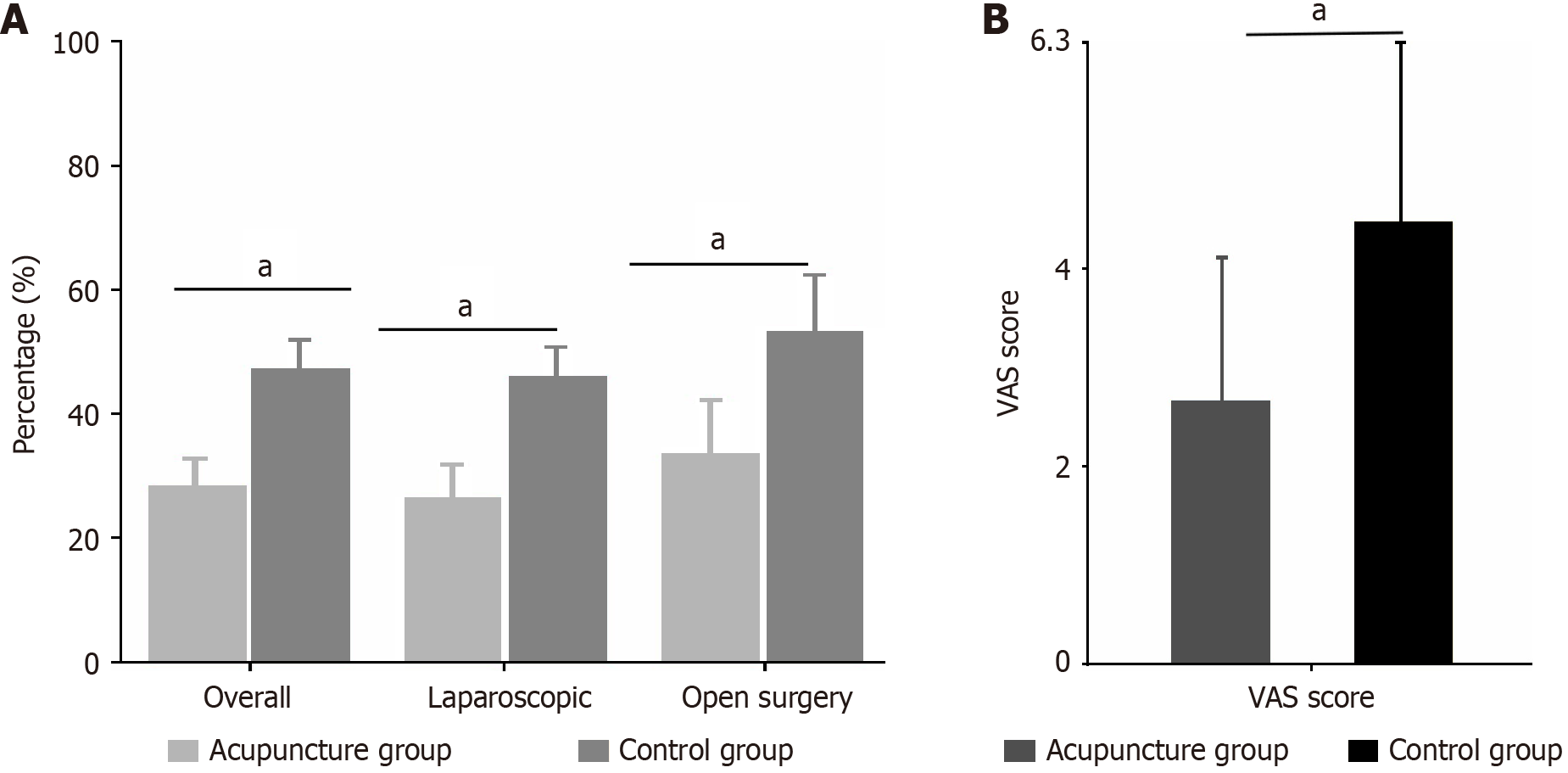Copyright
©The Author(s) 2025.
World J Gastrointest Surg. Nov 27, 2025; 17(11): 110262
Published online Nov 27, 2025. doi: 10.4240/wjgs.v17.i11.110262
Published online Nov 27, 2025. doi: 10.4240/wjgs.v17.i11.110262
Figure 1 Acupuncture’s impact on post-operative nausea and vomiting incidence rates across demographics.
Bar graph showing post-operative nausea and vomiting (PONV) incidence rates in the acupuncture group (light gray) vs the control group (dark gray) among female, male, and patients aged ≤ 45 years. Data are presented as mean ± SD. Post-operative nausea and vomiting incidence was significantly lower in the acupuncture group compared to the control group across all three subgroups. aP < 0.05 indicates statistically significant differences between groups. PONV: Post-operative nausea and vomiting.
Figure 2 Comparative analysis of acupuncture effects on post-operative nausea and vomiting.
A and B: This figure demonstrates that acupuncture significantly reduces post-operative nausea and vomiting incidence rates across overall, laparoscopic, and open surgery groups compared to control groups (A), while also achieving substantially lower visual analogue scale severity scores (B). All comparisons show statistical significance, indicating acupuncture’s consistent therapeutic efficacy in preventing and alleviating post-operative nausea and vomiting regardless of surgical approach. aP < 0.05. VAS: Visual analogue scale.
Figure 3 Post-operative nausea and vomiting incidence by surgical approach.
Acupuncture treatment significantly reduced post-operative nausea and vomiting incidence rates in both laparoscopic (26.7% vs 45.6%, P < 0.01) and open surgery groups (33.3% vs 53.3%, P < 0.05) compared to control groups. Although open surgery patients demonstrated higher baseline post-operative nausea and vomiting risk than laparoscopic patients, acupuncture showed consistent preventive efficacy across both surgical approaches, with similar numbers needed to treat (needed to treat 5.0-5.3). aP < 0.05.
- Citation: Miao Y, Zhang R. Effects of Chinese acupuncture on nausea and vomiting after cholecystectomy: A retrospective study. World J Gastrointest Surg 2025; 17(11): 110262
- URL: https://www.wjgnet.com/1948-9366/full/v17/i11/110262.htm
- DOI: https://dx.doi.org/10.4240/wjgs.v17.i11.110262















